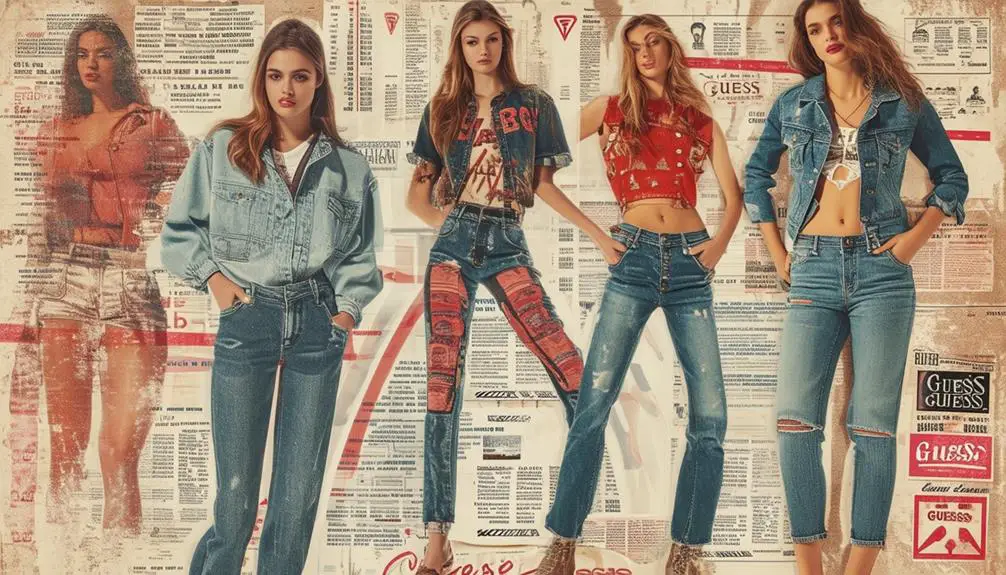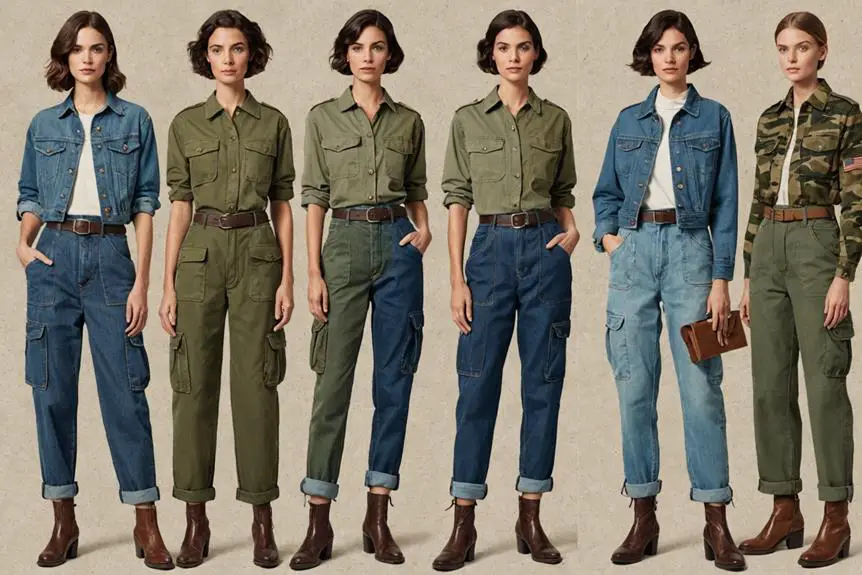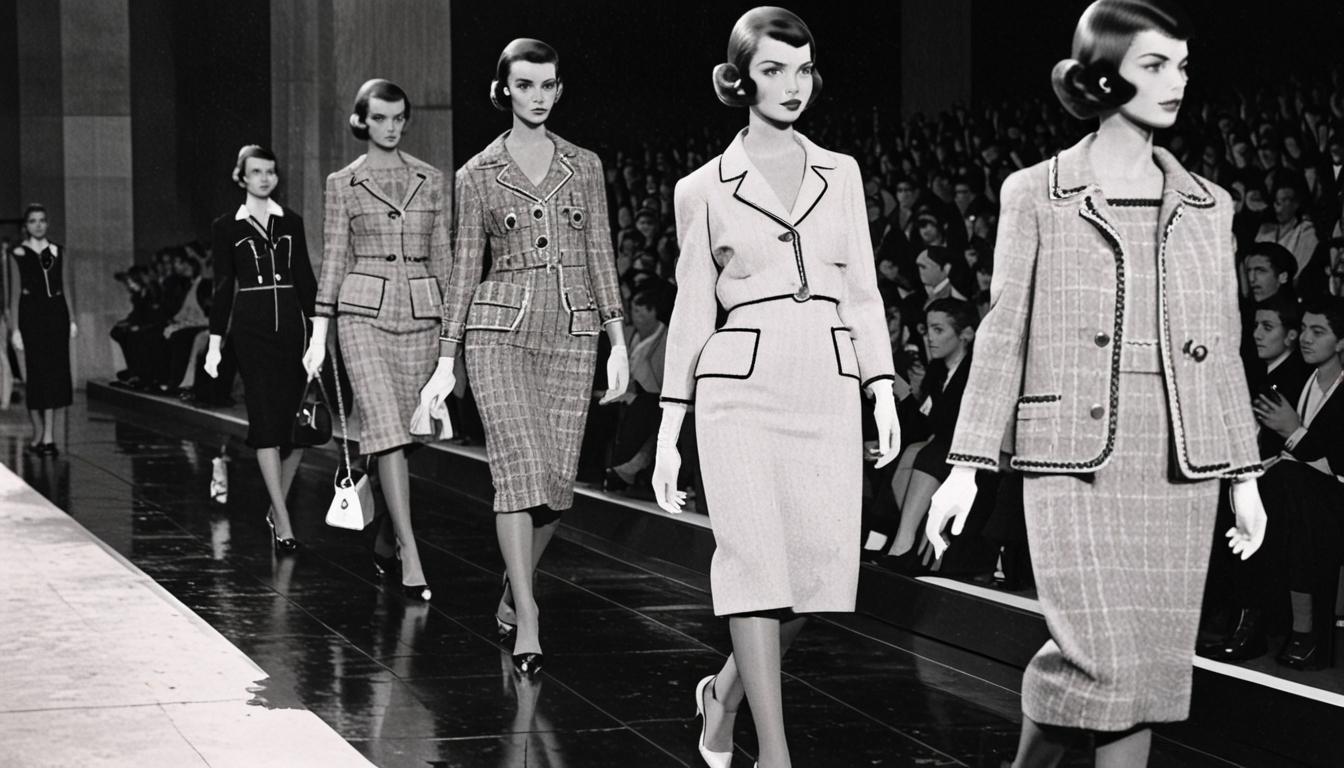In the 1930s, men's collar pins became essential for maintaining the shape of soft collars, blending functionality with style. You'd find them crafted from gold, silver, and platinum, often featuring intricate designs influenced by the Art Deco movement. These accessories not only secured collars but also added a touch of sophistication to any outfit, underlining your attention to detail. They reflected a shift towards personal expression, especially among young men embracing collegiate fashion. Your choice of collar pin could say a lot about your individuality and social status, hinting at the ways fashion evolved during this vibrant decade. Discover more about their significance today!
Overview of Collar Pins
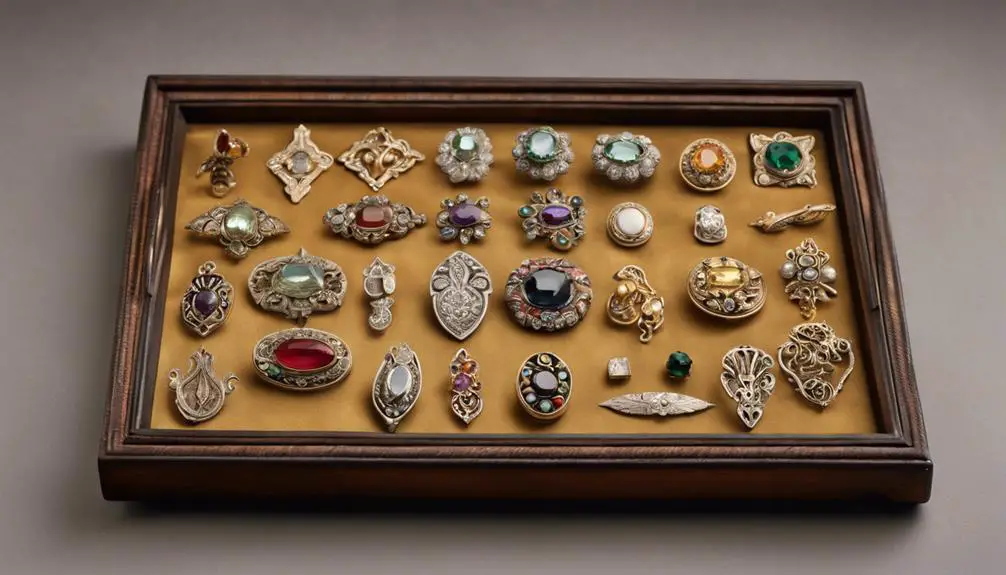
Collar pins, once a staple in men's fashion, gained prominence in the 1930s as essential accessories that not only secured soft collars but also elevated the overall aesthetic of an outfit. These pins emerged during a significant change in men's style, moving away from stiff collars to more relaxed, soft options. This shift required a solution to maintain collar shape, and collar pins provided just that.
Designed with various styles, collar pins often featured gold and silver finishes, showcasing decorative elements that reflected the era's fashion trends. You'd find them paired seamlessly with neckties, creating a polished look that was fundamental for both casual and formal occasions. As you donned a collar pin, you weren't just accessorizing; you were participating in a broader evolution of men's jewelry that emphasized personal expression.
In the 1930s, collar pins became more than functional items; they symbolized sophistication and style. Their popularity marked a shift toward more expressive accessories in men's fashion, making these pins a critical component of the well-dressed man's wardrobe.
Popular Materials Used
In the world of men's fashion during the 1930s, the materials chosen for collar pins played a significant role in defining style and sophistication. The era's penchant for luxury was evident in the common use of gold, silver, and platinum. These metals not only offered durability but also exuded an air of elegance. Many collar pins featured intricate designs, often embellished with precious stones or enamel, enhancing their visual appeal.
Another favored material was mother-of-pearl, which added a refined touch to men's attire. As fashion evolved, collar pins shifted from simple to ornate styles, frequently reflecting geometric shapes influenced by Art Deco. This change coincided with the rising popularity of decorative collar pins, essential for securing both wide and narrow collars.
| Material | Characteristics |
|---|---|
| Gold | Luxurious and durable |
| Silver | Elegant with a timeless appeal |
| Platinum | Rare and prestigious |
| Mother-of-Pearl | Sophisticated and luminous |
The combination of these materials not only enriched the aesthetic but also symbolized status, making the collar pin an indispensable accessory in the 1930s.
Design Variations
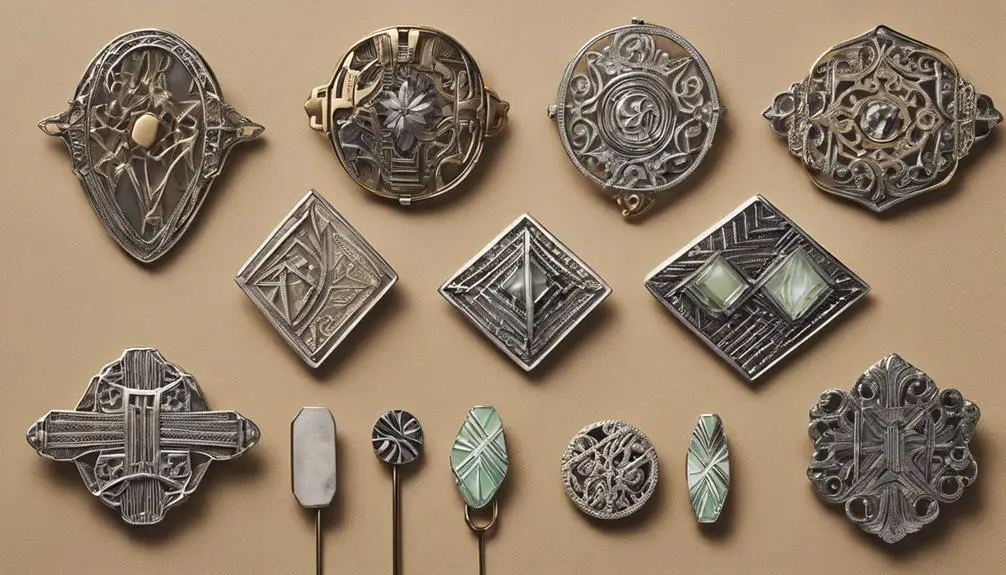
During the 1930s, the design variations of collar pins evolved considerably to meet the changing aesthetics of men's fashion. As you navigated this decade, you'd notice collar bars gaining popularity alongside traditional stickpins. Collar bars, horizontal pins that slide through the collar points, offered a sleek and modern way to secure your soft collar, maintaining a polished look without compromising comfort.
You'd see a range of styles, from simple sticks made of gold or silver to ornate designs embellished with gemstones or intricate engravings. These variations allowed you to express your personality and style, whether you preferred understated elegance or eye-catching details. The shift from stiff to soft collars opened doors for innovative accessories, leading to a flourishing of collar pin designs that complemented the evolving shirt styles.
Motifs inspired by contemporary trends also emerged, with sporting themes and geometric shapes becoming increasingly popular. This diversity in design not only showcased craftsmanship but also reflected broader cultural movements of the time. As you explored the fashion landscape of the 1930s, these collar pins stood out as essential accessories that balanced functionality with artistic flair.
Functional Benefits
Often overlooked, the functional benefits of collar pins in the 1930s played a pivotal role in the evolution of men's fashion. These accessories not only enhanced appearance but also served practical purposes that were essential for the well-dressed man of the era. The craftsmanship of vintage accessories, including collar pins, reflects the high-quality materials and designs typical of the time, making them sought after by collectors and fashion enthusiasts vintage clothing characteristics. Here's how collar pins made a difference:
- Stability: Collar pins secured the collar in place, preventing annoying curling or flapping, especially during movement.
- Polished Look: By providing a refined finish, collar pins complemented formal attire, giving you a sharp, elegant appearance.
- Versatility: With the introduction of collar pins, you could easily adapt to both stiff and soft collar styles, showcasing your personal flair.
- Craftsmanship: Many collar pins were crafted from high-quality materials like gold and silver, reflecting the era's emphasis on fashion and craftsmanship.
These functional benefits contributed notably to the popularity of collar pins, merging utility with self-expression. As you navigated the complexities of 1930s fashion, collar pins became an essential accessory, allowing you to embody both style and practicality seamlessly.
Influence of Collegiate Fashion
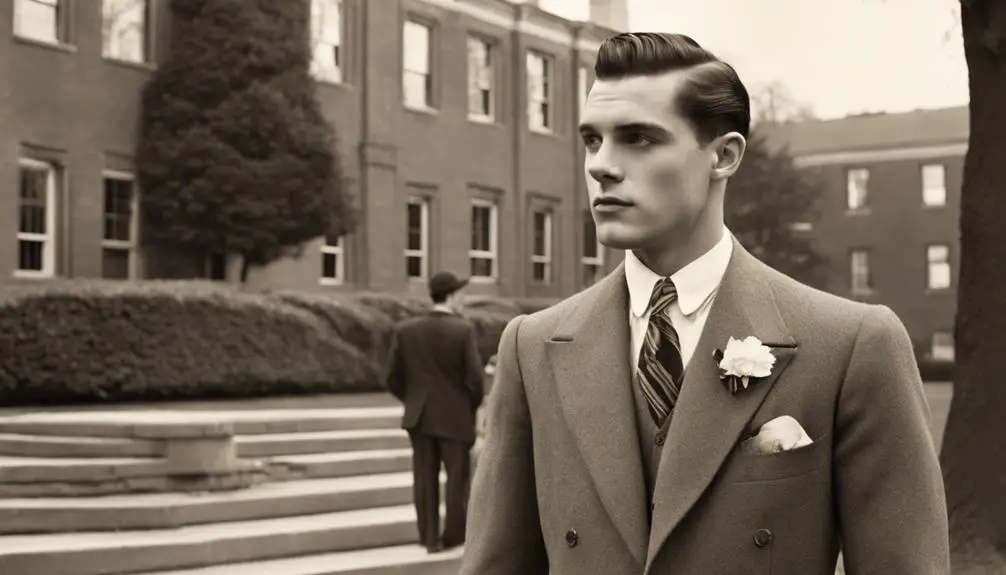
Collegiate fashion in the 1930s markedly reshaped how young men expressed their style, blending casual comfort with a touch of sophistication. This era, often referred to as "Joe College," saw a shift from traditional business attire to more relaxed clothing, prominently featuring soft-collared shirts. These shirts, paired with collar pins, offered a polished yet effortless look that appealed to the modern student.
As you walked across campus, you'd likely notice your peers sporting these collared shirts, often made from cozy materials like tweed and in warm autumn colors. Collar pins became essential accessories, serving both functional purposes—securing ties—and enhancing personal style. The trend towards softer collars reflected a broader embrace of comfort in collegiate fashion, marking a significant departure from the stiff, formal styles of previous decades.
Social dynamics on campus also played a vital role in shaping these fashion choices. By donning a collar pin, you subtly signaled attention to detail and a sense of status, positioning yourself amidst the evolving casualness of college attire. Consequently, collar pins weren't just accessories; they were integral to the identity of young men steering through a new era of fashion.
Cultural Significance
Amid the evolving fashion landscape of the 1930s, collar pins emerged as more than mere accessories; they became cultural symbols reflecting the shifting values of society. These pins were a reflection of the era's blend of functionality and personal expression, encapsulating a move towards a more casual yet polished menswear aesthetic.
- Symbol of Sophistication: Wearing a collar pin signified a man's adherence to fashion norms, often marking him as refined and socially desirable.
- Personal Expression: The decorative elements, from gemstones to intricate designs, allowed men to showcase individuality and social status.
- Innovation in Design: Introduced in 1921, collar pins facilitated greater freedom in collar styles, complementing the rise of neckties and diversifying men's fashion.
- Cultural Reflection: As part of broader trends in men's jewelry, collar pins mirrored societal shifts, blending practicality with decorative flair.
Through these facets, collar pins became integral to understanding the cultural fabric of the 1930s, highlighting how men navigated the complexities of identity and style during this transformative decade.
Comparison With Other Accessories
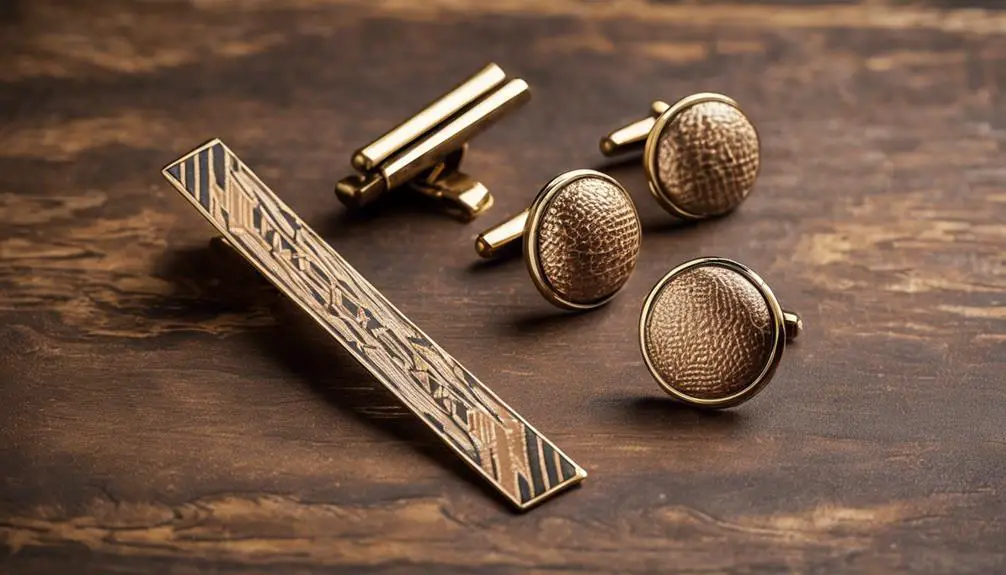
While collar pins emerged as a fashionable accessory in the 1930s, they represented a distinct evolution compared to other men's accessories like cufflinks and tie clasps. Collar pins provided a functional yet stylish solution for soft collars, replacing outdated collar buttons. This shift highlighted a growing trend toward accessories that were not only practical but also made a fashion statement.
Contrasting with cufflinks, which offered a more formal touch for dress shirts, collar pins allowed for a more relaxed expression of style. During a time when collegiate fashion was on the rise, collar pins became popular among students, enabling them to showcase their individuality without the need for a full suit. Tie clasps also gained traction, designed to keep ties secured against the wind while complementing the overall ensemble.
Here's a comparison of these accessories:
| Accessory | Functionality |
|---|---|
| Collar Pins | Secure soft collars, casual style |
| Cufflinks | Formal accent for dress shirts |
| Tie Clasps | Keep ties in place, functional style |
In this context, collar pins stood out as a unique accessory, combining practicality with a distinctive flair.
Notable Styles of the Era
Exploring the notable styles of the 1930s reveals a fascinating intersection of function and fashion in men's collar pins. As detachable collars faded, these accessories became essential for enhancing men's formal wear. The design evolution during this era mirrored broader trends in fashion history, emphasizing elegance and sophistication.
Here are four notable styles that defined this period:
- Art Deco Influence: Many collar pins showcased intricate designs and motifs, reflecting the era's artistic leanings and adding a touch of luxury to men's attire.
- Gold and Silver Finishes: Both materials were popular, offering a refined look that complemented three-piece suits and soft-collared shirts, staples in collegiate and business settings.
- Minimalist Designs: As the decade progressed, simpler, more streamlined collar pins gained traction, aligning with the era's trend towards understated elegance.
- Collar Bars: Introduced in 1921, these accessories secured ties against collars, enhancing overall presentation and elevating men's neckwear to new heights.
These styles not only served practical purposes but also highlighted the dynamic relationship between functionality and aesthetic appeal in the fashion history of the 1930s.
Care and Maintenance
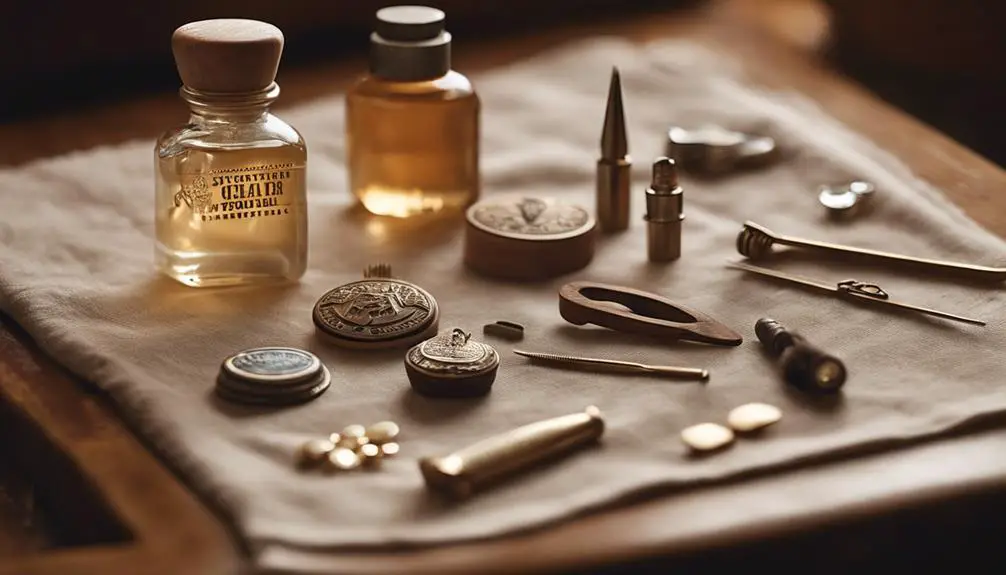
Maintaining the luster of your collar pins is essential for preserving their elegance and functionality. Regularly cleaning your collar pins with a soft cloth helps remove oils and dirt that can dull their shine. Make this a habit to keep your accessories looking polished and refined.
When not in use, store your collar pins in a dry, padded jewelry box. This prevents scratches and tangles with other accessories, ensuring they remain in pristine condition. Be cautious about exposing your collar pins to harsh chemicals or excessive moisture; these elements can cause tarnishing, particularly for those made of silver or gold.
To protect their structural integrity, always fasten collar pins securely when not in wear. This simple step minimizes the risk of bending or damage. Additionally, periodically check for loose components, such as clasps or pins. If you notice any issues, repair or replace them promptly to maintain peak functionality.
Collecting Vintage Collar Pins
Collectors often find themselves captivated by vintage collar pins from the 1930s, as these accessories showcase not only the fashion sensibilities of the era but also the exceptional craftsmanship that went into their creation. The intricate designs and materials used reflect a time when men's fashion embraced sophistication and elegance. If you're considering diving into this rewarding hobby, here are four key aspects to keep in mind:
- Design Diversity: Focus on different styles, such as collar bars or decorative pins, which were all the rage during the post-WWI period.
- Material Matters: Look for pins crafted from precious metals like gold and silver; their intrinsic value can greatly elevate your collection.
- Condition is Key: The rarity and preservation of vintage collar pins impact their market price, with well-maintained pieces commanding top dollar.
- Sourcing Options: Explore online platforms like eBay and Etsy, where you'll find a plethora of options spanning various decades, especially the coveted 1930s designs.
Frequently Asked Questions
When Were Collar Pins Popular?
Collar pins gained popularity in the 1920s and flourished throughout the 1930s. You'll find they became essential for securing soft collars, transforming men's fashion into a more polished and stylish expression during that era.
What Are Those Collar Pins Called?
You might know them as collar bars or collar clips. These accessories secure your collar points, enhancing your look and providing structure. Their various styles often incorporate precious metals, adding a touch of sophistication to your outfit.
What Is the Point of a Collar Pin?
A collar pin secures your collar points, enhancing your shirt's structure and preventing flapping. It's not just functional; it adds a stylish touch, elevating your overall appearance and reflecting your attention to detail in fashion.
What Is the Pin That Goes Through a Tie?
The pin that goes through a tie is a tie pin or tie bar. It secures your tie to your shirt, preventing it from shifting and ensuring a polished, sophisticated appearance for any occasion.


